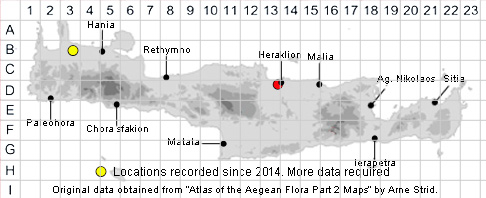PAPAVER SOMNIFERUM
Family and Genus:- See- PAPAVERACEAE/Sect. PAPAVER
Common Names:- Opium poppy
Homotypic Synonyms:- None
Meaning:- Papaver (L) Poppy.
Somniferum (L) Sleep inducing, sleep-bearing.
General description:- Herb, often strongly covered with a waxy bloom ± glaucous.
Stem:-
1) 25-70 cm tall, sparingly branched above, glabrous or sparsely setose.
Leaves:-
1) Margins, serrate, dentate, incised or pinnatipartite.
a) upper, sessile, amplexicaul.
b) lower, usually petiolate.
2) Petioles, glabrous or patent -or appressed-setose.
Flower:-
1) Solitary on long pedicels.
2) Buds, glabrous or patent- or appressed-setose.
3) Petals, 30-60 mm, mauve to pale violet, usually with dark basal marks.
4) Filaments, filiform or clavate.
5) Anthers, yellow to green or brown.
Fruit:-
1) Capsule, 1·4-9·5 x 0·8-6·5 cm, 1-2 times as long as wide, ovoid, ellipsoidal,
cylindrical or globose, distinctly stipitate, dehiscent or not.
2) Stigmatic disc, not wider than the capsule, with 5-18(-22) rays. flat topped or
rarely round and umbonate.
Key features:-
1) Filaments, filiform or clavate.
2) Capsules, not setose.
3) Stigmatic disc, flat or rarely round and umbonate.
4) Upper cauline leaves, amplexicaul.
Habitat:- Arable land, waste places, hillsides, vineyards and waysides. Cultivated
since ancient times as a food and drug plant. 0-300 m
Distribution:- Scattered throughout Greece. Probably native to SW Asia. Cultivated
in Crete (for ornament or the edible seeds) and may be locally naturalized.
Flowering time:- Apr to early June.
Photo by:- Fotis Samaritakis
SPECIES DESCRIPTION

